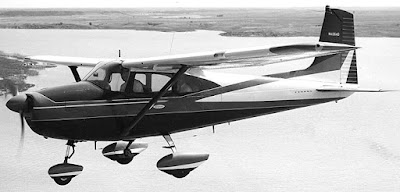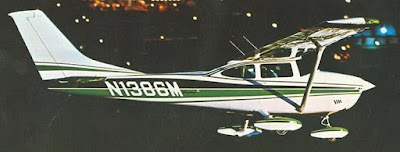Jeanie
Pattern Altitude
Would that year qualify as a straight tail182? And why exactly are those good?
Last "straight-tail" was the 1959 C-182B.No. Straight tails stopped in either 62 or 63.

1972 would be a fairly modern 182 (photo below).Would that year qualify as a straight tail182? And why exactly are those good?

It's a 182 - rugged, reliable - what's not to like?
The swept tail ones look faster

Last "straight-tail" was the 1959 C-182B.

Swept tails appeared in 1960 on the 172, 175, 182, 210 and 310.
1972 would be a fairly modern 182 (photo below).

Straight-tail 182s were lighter with the same power (read: excellent short-field and climb performance); more pleasant pitch handling because they used adjustable stabilizers for pitch trim (as on the C-180 from which they were derived) instead of the fixed stabilizer and movable trim tab introduced on the 1962 C-182E. On the downside, pre-1962 182s had a narrower cabin and fewer windows -- again, just like a 180. Whether the tail is straight or swept, by itself, makes almost no difference, other than that a swept tail adds unnecessary weight and drag, for no improvement in performance. It's cosmetic only.
No. Straight tails stopped in either 62 or 63.
I'm talking about when they're parked
A friend of mine has a '56 182 with a P.Ponk O-470-50 STC giving him about 270 hp. It's one heck of a plane but be aware the old straight tails sit really high and won't fit in a standard Port-a-Port hangar.
Would that year qualify as a straight tail182? And why exactly are those good?
A friend of mine has a '56 182 with a P.Ponk O-470-50 STC giving him about 270 hp. It's one heck of a plane but be aware the old straight tails sit really high and won't fit in a standard Port-a-Port hangar.
That's a "P" model. Some feel that the "P" and "Q" models are the most desirable 182's, they got the tubular landing gear replacing the steel main gear track. Some "P" models got the O470S model engine, and the "Q" got the O470U.
The fresh pick STC applies to these models and they get a 150lb weight increase with a paper STC to match the take off limit of the "R" series. Landing weight remains the same 2950lbs.
You'll typically find higher prices than a comparably equipped "N" model (1970 - 1971). Keith Petersen prefers the P & Q models for his Katmai conversion, but he does them on N models as well.
I personally don't understand the appeal of the P&Q models, but I'm certain someone will explain it to us. I've focused on an N model since I think the overall value is better, but maybe someone will prove me wrong.
Some like the integral fuel tanks of the Q, some like the bladders of the P
The U engined planes are quieter, but are not eligible for auto gas STCs
A friend of mine has a '56 182 with a P.Ponk O-470-50 STC giving him about 270 hp. It's one heck of a plane but be aware the old straight tails sit really high and won't fit in a standard Port-a-Port hangar.
The hell they won't. Or you might explain it to my '58 sitting in my Port-A-Port right now. Yes, you have to be careful of the rotating beacon housing, but they fit just fine, thank you.
Jim
Tug with bottle jack or lift on nose wheel solves the beacon problem.
Some like the integral fuel tanks of the Q, some like the bladders of the P
The U engined planes are quieter, but are not eligible for auto gas STCs
